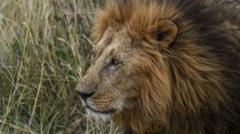Why Did a New Zealand Wildlife Park Euthanize Two Lions?

Published: 2025-11-06 06:00:28 | Category: technology
The Kamo Wildlife Sanctuary in Whangārei, New Zealand, is facing severe challenges following the euthanisation of two ageing lions due to financial difficulties. The privately owned sanctuary, which has been up for sale since August, cited the animals' serious health conditions as a primary reason for this heartbreaking decision. The future of the remaining lions remains uncertain as the sanctuary's operator explores all possible options amidst public outcry.
Last updated: 20 October 2023 (BST)
What’s happening now
The Kamo Wildlife Sanctuary, which has struggled financially for several years, is now in a critical situation following the euthanisation of two of its lions. The sanctuary's operator, Janette Vallance, announced that the decision was made after the animals, aged between 18 and 21 years, exhibited serious, untreatable health conditions. The public response has been overwhelmingly negative, with many calling for the remaining lions to be relocated or cared for. However, Vallance has stated that relocation is not feasible given the animals' complex needs and age.
Key takeaways
- The Kamo Wildlife Sanctuary has euthanised two lions due to health issues and financial difficulties.
- The sanctuary has been up for sale since August, with ongoing uncertainty about its future.
- Public backlash has prompted discussions on relocating the remaining lions, but options appear limited.
Timeline: how we got here
The Kamo Wildlife Sanctuary has a complicated history that has contributed to its current situation:
- 2004: The sanctuary was founded and gained fame through a reality television programme featuring Craig Busch, the "Lion Man".
- 2009: A tragic incident where a white tiger fatally mauled a keeper led to health and safety charges and fines.
- 2014: Bolton Equities acquired the sanctuary after it was closed by New Zealand's Ministry for Primary Industries (MPI) for failing to meet animal welfare standards.
- 2021: The sanctuary reopened after seven years of closure.
- August 2023: The sanctuary was put up for sale amid ongoing financial issues.
- October 2023: Two lions were euthanised, with the fate of the remaining five still uncertain.
What’s new vs what’s known
New today/this week
The most recent development is the euthanisation of two lions, which was a difficult decision made by the sanctuary's owners. This action has generated significant public backlash and renewed calls for the care of the remaining lions.
What was already established
The sanctuary has struggled with financial challenges for many years, compounded by controversies, including the tragic death of a zookeeper and previous closures mandated by regulatory authorities. The current owners have been trying to sell the property since August 2023.
Impact for the UK
Consumers and households
This situation raises concerns about animal welfare and the responsibilities of wildlife parks, which may resonate with UK audiences who are sensitive to animal rights issues. The euthanisation of animals often sparks public outcry, leading to calls for stricter regulations on animal care in similar facilities.
Businesses and jobs
The closure and potential sale of the Kamo Wildlife Sanctuary could impact local employment and tourism. The sanctuary had reopened just two years ago, and its financial struggles may deter future investments or interest from potential buyers.
Policy and regulation
The role of New Zealand's Ministry for Primary Industries (MPI) in overseeing animal welfare and facility conditions highlights the need for robust regulations in the wildlife sector. The situation may prompt discussions in the UK about animal rights legislation and the welfare of big cats in captivity.
Numbers that matter
- 18-21 years: The ages of the lions that were euthanised, indicating they were considered elderly for their species.
- NZ$60,000 (£26,000): The amount that the sanctuary had to pay in reparations following the 2009 incident involving the death of a zookeeper.
- 2 years: Duration the sanctuary was reopened before facing liquidation.
Definitions and jargon buster
- Kamo Wildlife Sanctuary: A privately owned wildlife park in Whangārei, New Zealand, known for housing big cats.
- Bolton Equities: The current owner of the Kamo Wildlife Sanctuary, which acquired it in 2014.
- Ministry for Primary Industries (MPI): New Zealand's governmental body responsible for regulating animal welfare and food safety.
How to think about the next steps
Near term (0–4 weeks)
The immediate future for the remaining lions is uncertain. The sanctuary's operators will likely continue to assess options for their care and explore potential buyers for the facility.
Medium term (1–6 months)
In the coming months, developments could include the sale of the sanctuary or a potential relocation of the remaining lions if new ownership emerges that is willing to invest in their care.
Signals to watch
- Announcements from Kamo Wildlife Sanctuary regarding the fate of the remaining lions.
- Updates from potential buyers expressing interest in the sanctuary.
- Public and regulatory responses regarding animal welfare and management practices.
Practical guidance
Do
- Stay informed about animal welfare regulations and practices, especially regarding big cats in captivity.
- Support reputable wildlife sanctuaries and organisations that prioritise animal care.
Don’t
- Do not assume that all wildlife parks operate under the same standards of care.
- Avoid spreading misinformation about the circumstances surrounding the sanctuary's closure and the fate of the animals.
Checklist
- Research the history and current status of wildlife sanctuaries you may wish to support.
- Consider the implications of animal welfare in your travel plans or tourism investments.
- Engage with local animal rights groups to stay updated on advocacy efforts.
Risks, caveats, and uncertainties
The situation at Kamo Wildlife Sanctuary highlights the complexities of animal care amidst financial pressures. The decision to euthanise the lions has been met with significant backlash, raising questions about the responsibilities of wildlife sanctuaries. There remains uncertainty about the future of the remaining lions, especially given their age and specific needs, which complicate relocation efforts.
Bottom line
The Kamo Wildlife Sanctuary's recent decisions reflect the broader challenges facing wildlife parks in balancing financial viability with animal welfare. The fate of the remaining lions hangs in the balance, underscoring the importance of community engagement and regulatory oversight in ensuring ethical treatment of animals in captivity.
FAQs
What led to the euthanisation of the lions at Kamo Wildlife Sanctuary?
The euthanisation was prompted by the lions' serious health conditions and the sanctuary's financial difficulties, leaving no viable options for their care.
What does the future hold for the remaining lions?
The future of the remaining lions is uncertain, but the sanctuary's operator is exploring potential buyers who may be able to care for them.
Why is the situation at Kamo Wildlife Sanctuary significant?
This situation raises important questions about animal welfare, the responsibilities of wildlife parks, and the regulatory frameworks that govern them, which resonate with animal rights discussions globally.



